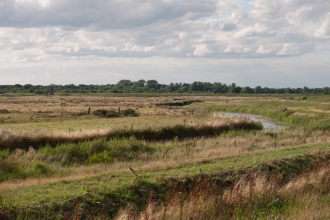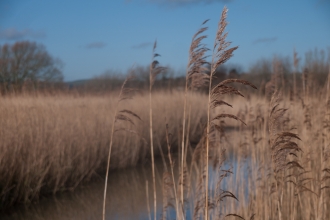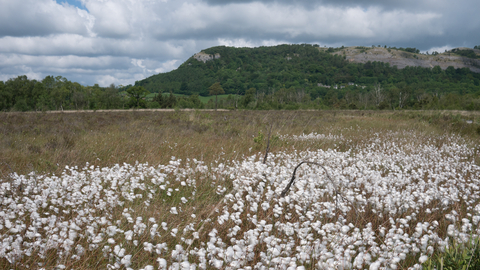
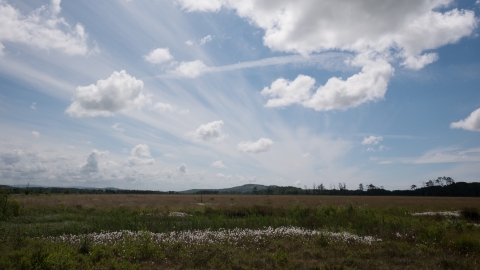
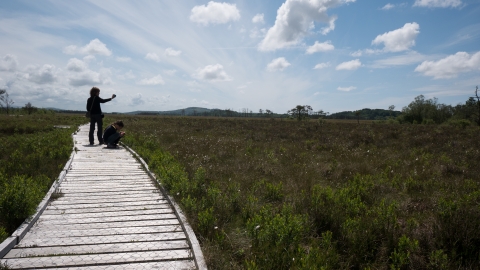
Raised bog
What is it?
Formed of a deep body of peat, raised bog can be several metres higher than the surrounding land and covered with a skin of typical bog vegetation. The size of the bog and frequently a fringe of secondary woodland make this extraordinary domed structure hard to appreciate. It tends to be the location at flat valley bottoms and lowland plains, bog vegetation and protected status that identify intact raised bogs.
Raised bogs are much wetter than the surrounding land. The peat acts as a sponge, retaining rainwater that is only gradually released. In some cases, a lens of water just below the surface makes the bog quake underfoot. These very wet conditions are ideal for acid-loving bog-mosses, cotton grasses, heather, cross-leaved heath, bog asphodel and deer-grass. Degraded bogs have fewer bog-mosses and scrub encroachment is a common consequence of drainage or water abstraction.
Why is it like this?
Raised bogs have their origins in shallow glacial lakes and wet hollows. Over long time periods, each lake or hollow became filled with the un-decayed remains of marginal vegetation and silt, and peat began to form. Gradually the influence of the more nutrient-rich margins decreased and conditions became favourable for peat-forming bog-mosses, which increased the volume of peat until the surface vegetation became completely isolated from the groundwater and was fed entirely by rainwater, creating the very infertile, acid conditions typical of bogs.
This whole process takes thousands of years. However, destruction can occur rapidly and over the last 100 years peat cutting, drainage and afforestation has resulted in the loss of 94% of raised bog in Britain and 99% in Ireland.
Distribution in the UK
Raised bogs are widely but unevenly distributed across wetter parts of the UK, with particular concentrations in the central belt of Scotland, the Solway region, around Morecambe Bay and in Northern Ireland.
What to look for
Within the bog vegetation, look closely for a number of particularly small, attractive plants, including cranberry and bog-rosemary. Colourful carpets of bog-mosses will capture the interest of keen bryologists, and are worth examining closely to appreciate the wide range of shapes and colours. These mosses also create a distinctive surface topography of small hummocks and hollows, which are absent in degraded bogs dominated by hare’s-tail cotton grass and purple moor-grass. Another feature to look out for is the ‘lagg’ – this is characterised by fen vegetation with a greater diversity of species than the main bog, including sedges. In theory, it forms a halo around the bog, a consequence of increased nutrients where the bog water-table meets that of the surrounding land.
Raised bogs are also rich in invertebrates including midges and mosquitoes! Look out for butterflies including pearl-bordered fritillary and large heath.
Conservation
Raised bogs have generally been cut for peat, afforested or drained, and fully intact examples complete with a marginal lagg are unknown in Europe. However, many support active bog vegetation and even bogs that have been previously cut for peat may have re-vegetated with peat-forming communities. An ongoing effort is needed to prevent further destruction of bogs and protect those that we still have.
While few raised bogs remain intact, the best are often nature reserves, where boardwalks commonly provide access to the otherwise rather tricky terrain!


